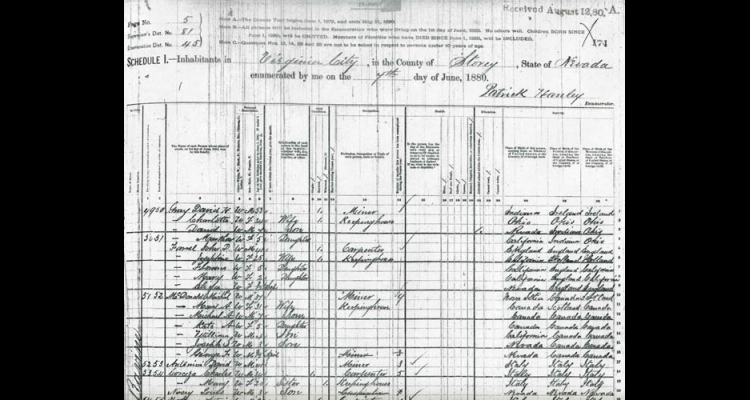Scots: Immigrants from Scotland
Scots arrived in Nevada at the beginning of historic settlement. These immigrants, together with fellow Celts, (the Cornish, Irish, Welsh, and Manx), played important roles in the region's development. Although Scots were one of the larger groups to settle North America, the Irish and Cornish eclipsed them in Nevada.
The 1860 census documented one hundred Scots in the western Great Basin, but within a decade they increased to over 600. Scots formed Caledonian societies, held festivals, and celebrated their ethnicity. As early as 1865, Virginia City Scots organized an annual dinner in honor of Robert Burns, Poet Laureate of Scotland. The evening included poetry readings and bagpipes.
By the 1870s, northern Nevada Scots held annual Highland Games in Carson City's Treadway Park. Competitions featured Scottish dancing and athletics including tossing the caber, a large wooden pole. Militias competed in shooting contests, but Irish units often took the prize.
The 1870 federal census documents a cluster of Scots in Carson City. This transient labor force traveled from state to state, working on capitol construction projects. Although an Irish general contractor directed prisoners who quarried stone for Nevada's capitol, Scottish stone cutters put the final touch on the building's masonry.
Like others, many Scots left the state with the depression of the 1890s. While almost 700 called Nevada home in 1880, only 245 remained in 1900. The decline was pronounced on the Comstock where numbers fell from almost 200 in 1880 to twenty-six at the turn of the century. Organizations disbanded, creating a hiatus in public celebrations of Scottish heritage. Although the Scottish population in Nevada increased in the twentieth century, it took decades for immigrants and descendants to celebrate their roots again.
Article Locations
Related Articles
None at this time.




